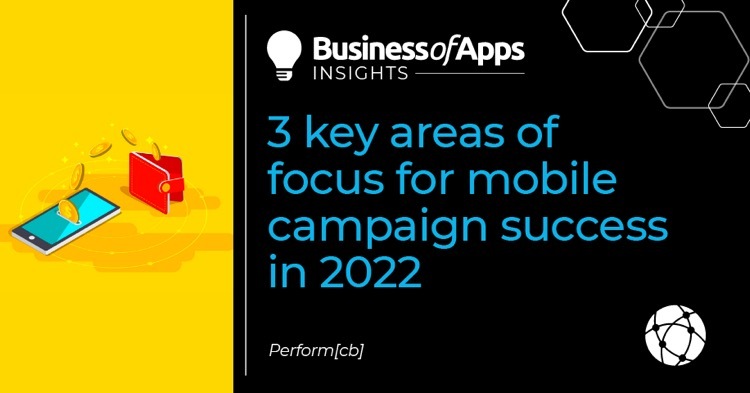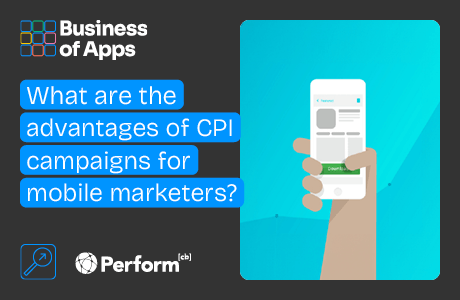
The state of change seems to be the only constant across the mobile landscape; it’s up to marketers to foresee upcoming trends and act on them. Over the last few years, we’ve seen mobile marketers overcome a multitude of industry-wide shifts, including constricting privacy policies, constraints on targeting and attribution, and advances in AI and automation. As we look to the year ahead, it’s clear that marketers will be forced to adapt their advertising to the needs and behaviors of the modern consumer. Personalization and relevancy are no longer an expectation, but an obligation to reach and retain users. Marketers must hone their audience segmentation strategy while simultaneously emphasizing the call for a more diverse and inclusive digital marketplace. According to a study done by Statista in cooperation with Zenith, mobile advertising spending is trending to reach nearly $413 billion by 2024. Forecasting the trends of tomorrow while adopting and personalizing the trends of today is how mobile marketers can set their campaigns up for ROI success.
#1: Audience segmentation and privacy
It’s no surprise that marketers will have to adapt their campaign targeting to accommodate growing privacy policies if they want to remain successful on mobile. First-party user data continues to be mobile marketers’ biggest opportunity. The digital marketing industry as a whole has become so reliant on tracking and third-party cookie data. However, there is a strategy, much like a diamond in the rough, that many are starting to invest in – contextual targeting.
Contextual advertising takes a privacy-first approach to targeting, meaning that marketers will work with a digital ad network to segment ads based on parameters such as keywords and on-page content. When marketers target contextually, the placement of their ads is directly relevant to the product or service being offered. The content within the ad, therefore, directly relates to the content on the site and the corresponding on-page audience. A recent study found that 69% of consumers were more likely to engage with contextually relevant ads over behaviorally-targeted ads.
In addition to contextual advertising, those who prioritize personalization across the entirety of their campaign strategy will have a stronger opportunity to re-acquire users and further gain their trust. By better understanding their consumer base, mobile marketers can create an optimal user experience, ultimately increasing conversion rates, customer lifetime value (CLV), and revenue. Learn how you can further apply user insights to strengthen your mobile campaign success.
#2: Focus on equal minority targeting
While many mobile marketers get caught up in emerging technology and changes to online tracking, it’s important not to lose sight of the human in front of the screen. Racial equity in the marketplace is an untapped opportunity that mobile marketers cannot ignore any longer. Following a recent study, it was found that multicultural consumers make up almost 40% of the U.S. population, but multicultural media budgets only make up 5.2% of total ad spend. There is a major vacancy when it comes to engaging minority audiences. Huge segments of the world’s population have been left feeling underserved and underrepresent§ed since the onset of digital and mobile advertising, and now is the time to change that.
As mobile marketers look to the months and years ahead, meaningful messaging and diverse media channels will be most impactful when it comes to connecting with marginalized consumers. According to a study by Microsoft, 67% of ethnic minorities are more trusting of brands when they’re represented in their advertising. The time is now to create dynamic and inclusive campaign strategies to engage and convert these users. Marketers must be cognizant of the potential this underutilized group of consumers can have on their app’s success. At the end of the day, these aren’t just people waiting on the back burner – they’re consumers with high intent to engage and spend.
#3: Technology catered to the modern employee
Mobile marketers are at the forefront of the digital revolution as apps continue to become a necessity in our everyday lives. From food delivery and mobile banking, to career networking and educational services, today’s consumers expect useful technology with an intuitive user experience. With the “Great Resignation” upon us, it’s especially crucial for brands to cater their advertising to meet the needs of those users spending time online searching for new careers and more flexibility. The mobile industry has already seen a 27% jump in mobile app usage on the topics of careers and employment.
While ensuring technology is catered to users’ needs and wants, the same should be true for the modern employee. Many marketers are focusing on recruiting new talent by offering technology solutions that ease and support employees’ personal and professional growth. Especially for those working in the mobile advertising space, advanced marketing technology that includes easy, precise segmentation and measurement can make a job or company more attractive.
Additionally, 5G continues to be a hot commodity that many app marketers should plan to tackle this year. Being that mobile access will only increase with 5G service, this presents a wealth of opportunities for marketers to engage even more with users. As more consumers gain access to 5G on their mobile devices, businesses must adapt to keep pace with users’ increased bandwidth and connectivity. 5G adoption will drive consumers’ expectations to new highs, ranging from the quality of digital products and the usability of cloud-based solutions, to simultaneously using apps across multiple devices.
How Will You Win 2022?
While 2022 may feel like the year of the unknown for some, the challenges and solutions facing mobile marketers are clearly defined. Advancements in AI automation and targeting capabilities are expected to deliver positive results not just to mobile marketers’ success, but to consumers’ success as well. By reaching untapped audiences through a seamless, personalized user experience, both parties can benefit and in turn, drive increased ROI. If you’re ready to get ahead of these mobile trends, reach out to our team of user acquisition experts to learn more about how you can reach untapped audiences in 2022.










